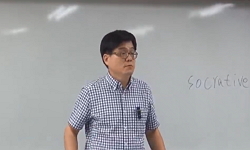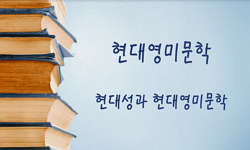중국 대동사상은 중국의 고대 경전에서부터 보이기 시작하여 캉유웨이, 쑨원에 이르기까지 2천 년간을 이어져 왔다. 대동사상은 이처럼 중국에서 2천여 년 간 계승되었으며, 이것을 수용한 ...
http://chineseinput.net/에서 pinyin(병음)방식으로 중국어를 변환할 수 있습니다.
변환된 중국어를 복사하여 사용하시면 됩니다.
- 中文 을 입력하시려면 zhongwen을 입력하시고 space를누르시면됩니다.
- 北京 을 입력하시려면 beijing을 입력하시고 space를 누르시면 됩니다.
https://www.riss.kr/link?id=A100096000
- 저자
- 발행기관
- 학술지명
- 권호사항
-
발행연도
2014
-
작성언어
Korean
-
주제어
대동사상 ; 캉유웨이 ; 대동서 ; 大同書 ; 이상사회 ; 근대교육 ; 국민교육 ; 평등교육 ; 여성교육 ; The Great Unity Idea ; Kang Youwei ; Datongshu ; utopia ; modern education ; education for the people ; equal education ; education for women
-
KDC
800.000
-
등재정보
KCI등재
-
자료형태
학술저널
- 발행기관 URL
-
수록면
289-314(26쪽)
- 제공처
- 소장기관
-
0
상세조회 -
0
다운로드
부가정보
국문 초록 (Abstract)
중국 대동사상은 중국의 고대 경전에서부터 보이기 시작하여 캉유웨이, 쑨원에 이르기까지 2천 년간을 이어져 왔다. 대동사상은 이처럼 중국에서 2천여 년 간 계승되었으며, 이것을 수용한 각 시대의 사상가들도 적지 않았다. 본고는 중국 대동사상의 평등사상과 공공 사상에 중점을 두고 무술변법시기 캉유웨이의 대동사상의 형성과 완성 안에서 교육적 내용을 살펴, 대동사상에 근거한 중국 근대교육의 중요 내용과 의미를 살펴보고자 한다. 중국의 가장 대표적인 대동사상은 일반적으로 「禮記」 禮運篇으로 ``天下爲公``과 ``世界大同``이란 두 개념이 최초로 제시되었다. 「禮記」 禮運編에서 ``大道``가 실현된 사회를 ``大同``으로 말하고 있다. 대동 세계를 실현할 수 있는 군자 또는 현자의 존재 즉 인간이 그 선의 가능성을 개발시키기 위한 교육을 중국 고대 대동사상에서 강조하였다. 이후 중국 근대에 와서 무술변법시기의 주도자 역할을 했던 캉유웨이는 公羊三世說을 이용하여 ``大同世``를 사회개량의 최종목표로 삼고, 그것을 전문적으로 논한「大同書」를 저술하였다. 캉유웨이가 대동사회를 구상하기 시작한 것은 1884년부터이지만 그것을 구체화시킨 것은 무술변법시기였다. 무술변법시기 캉유웨이가 주장한 교육개혁 내용은 「대동서」의 대동사상에 근거한 평등교육, 국민교육, 여성교육이다. 19세기말 캉유웨이는 「대동서」를 통해 새로운 세계적 결합을 지향하여 근대서구의 영향에 유래하는 公理.公法관념을 형성하였다. 이러한 시각을 토대로 캉유웨이는 사람들의 지혜를 계발하는 일을 우선으로 하여 학교교육을 중요시하였다. 「대동서」에서 人本院에서부터 小學院, 中學院, 大學院에 이르기까지 교육에 대해 언급하였다. 평등사상과 관련하여 그는 「대동서」에서 남녀, 계급, 경제, 인종의 차별 등의 방대한 평등사상을 피력하였다. 이러한 평등사상은 그의 여성교육에 대한 강조에서도 나타난다. 그는 당시의 과거제도라는 하나의 틀에서 벗어난 대동사상에 근거한 국민교육, 평등교육 그리고 여성교육을 강조하고 있다는 점에서는 중국 근대적 교육 내용에는 중국 대동사상과 관련한 내용이 담겨져 있다고 할 수 있다.
다국어 초록 (Multilingual Abstract)
As the Great Unity Idea of China began to appear in ancient Chinese classics, it was passed down for 2,000 years from Kang Youwei to Sun Wen. It has been inherited for 2,000 years in China by a number of thinkers in different ages. This study aims to ...
As the Great Unity Idea of China began to appear in ancient Chinese classics, it was passed down for 2,000 years from Kang Youwei to Sun Wen. It has been inherited for 2,000 years in China by a number of thinkers in different ages. This study aims to speculate on educational aspects involving the formation and final form of the Great Unity Idea developed by Kang Youwei in the period of the Modern Reform Movement focusing on equality and the publicness of China to understand the effects and meanings of modern Chinese education based on the Great Harmony Idea. The two concepts of ``Realization of Publicness`` and ``Great Global Unity`` were presented as the most typical expressions of the Great Unity Idea in Liyun of 「Liji」. In the Liyun of 「Liji」, the society where Datou is realized is called Daetong(Great Unity). Education to develop a man of honor who realizes the world of great unity and the possibility of good has been emphasized in the ancient Great Unity Idea of China. Kang Youwei, who was a leader of the Modern Reform Movement, targeted ``Daetongse`` as the final goal of social improvement using Kongyang Samsesol and discussed it specifically in 「Datongshu」. Although Kang Youwei planned a society of Great Unity from 1884, he specified it in the period of the Modern Reform Movement. What Kang Youwei suggested in that period was equality in national and female education based on the Great Unity Idea in 「Datongshu」. In the late 19th century, Kang Youwei made the concepts of public good and public law derived from the influence of the modern west orienting toward a new global combination through 「Datongshu」. Based on such a perspective, he put an emphasis on school education with the development of wisdom as a priority. The 「Datongshu」 mentioned Inbonwon, Sohakwon, Junghakwon and Daehakwon as educational institutes. With respect to equality, he broadly expressed equality for men and women, class, economy and racial differentiation. Such equality is revealed in his emphasis on education for women. Modern education of China has contents involving the Great Harmony Idea in that he emphasized education for the people, women and equality beyond the limited frame of the civil service examination system.
동일학술지(권/호) 다른 논문
-
- 조선대학교 인문학연구소
- 오문석 ( Moon Seok Oh )
- 2014
- KCI등재
-
- 조선대학교 인문학연구소
- 김희진 ( Hee Jin Kim )
- 2014
- KCI등재
-
- 조선대학교 인문학연구소
- 이송희 ( Song Hee Lee )
- 2014
- KCI등재
-
어문학 : 이청준 소설에 드러나는 "반복" 연구 -「귀향연습」, 「별을 기르는 아이」, 「조율사」를 중심으로-
- 조선대학교 인문학연구소
- 문으뜸 ( Eu Tteum Mun )
- 2014
- KCI등재






 KISS
KISS







